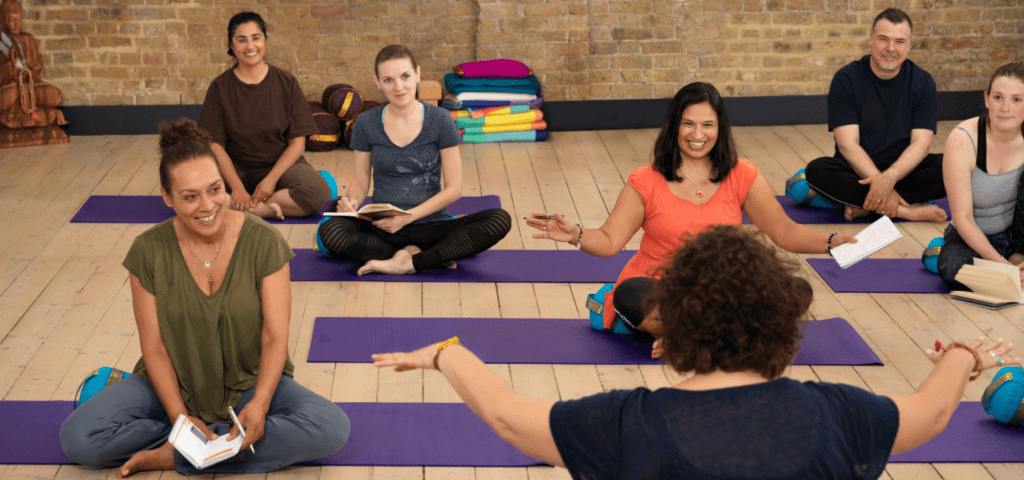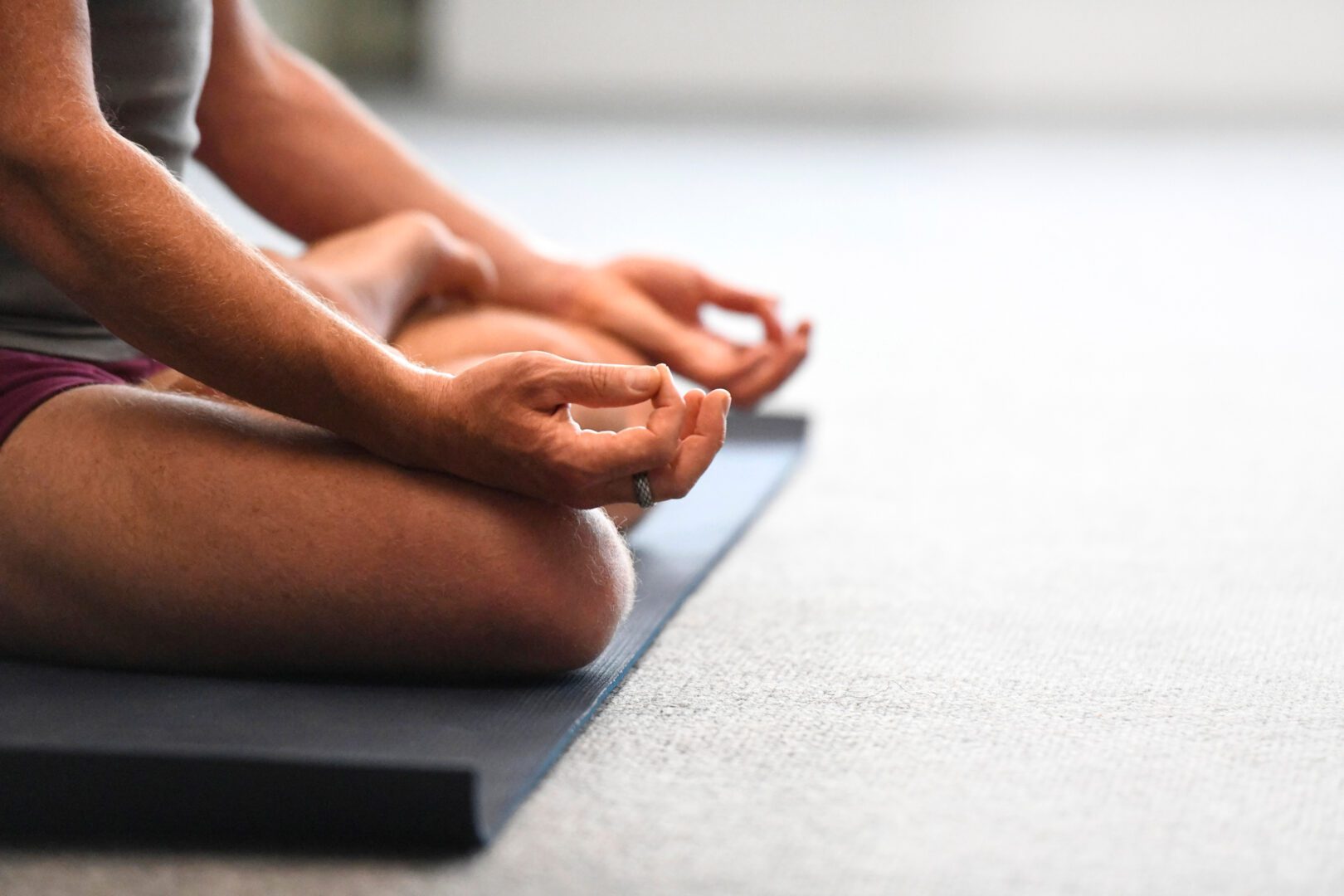
Yoga and Emotional Health
In support of Emotional Health Awareness Day, yoga therapist and BWY tutor Judy Hirsh Sampath explains how yoga can have a powerful impact on emotional wellbeing.
As yoga teachers, we invite our students into movement, breathing exercises and mindful meditations that support a fast-track shift in mood from the start to the end of a class. Yoga practices can help us to self-regulate, to offer a quiet space to discharge overwhelming feelings, and move through the ups and downs, the opposites of the rollercoaster of emotions we experience as we journey through our lifetime.
Physical Tension
As a yoga therapist of more than 15 years, I have plenty of evidence to support the fact that there is a direct correlation between physical tension and mental/emotional tension and vice versa. I see it in my session work all the time.
For example, when you feel emotional, whether its dread, fear or perceive a threat, real or imagined, your physical body will react immediately. As stress hormones flood into your body, there are some very real physical sensations that go along with them – the neck stiffens, the jaw muscles tighten, the shoulders rise up towards the ears, the hands go to protect your grimacing face, your tummy may get knotted up, you may feel sick to your stomach…the body has an ancient and automatic response.
These visceral signals of the body are ancient survival mechanisms that trigger emotions. First as impactful physical sensations, then subconscious surfacing emotion, and then as conscious cognitive mental disturbances that can repeat or persist in held patterns. Staying in this state of fear, disgust, rage, shame…whatever you call it (fill in your familiar emotion), inevitably takes a toll. It is weathering on your body, mind and spirit, leading to mental health issues and isolation.
A short practice
Imagine you hear a sudden and loud bang, a noise that creates a startle response, that makes you ‘jump’. Try it now – imagine something startling you – what happens in your body when you simply imagine a perceived threat? Notice how you tense your jaw, neck and shoulders. Anything else you notice as a knee-jerk reaction? What kind of thoughts, sounds, words accompany this reaction.
Now let the tension go, take a few long breaths, stretch out as if you’re yawning your body awake. Lie down and imagine you are in a very safe place, somewhere imagined or a place you know. Describe it in as much detail as you can. Take a few more long yawns and sighs, stretch out your limbs and hands, and then let your muscles relax as much as you can. What kind of thoughts, sounds, words accompany this reaction.
You can do this a few times more to repeat the experience and notice the difference between feeling tense, and feeling relaxed.
The yoga of lasting change
Yoga practices may include postures (asana), breathing techniques (pranayama), mindful attention (pratayahara), increasing self-awareness (dharana) and meditation (dhayana), and can lead the student or client to the opposite of the ‘negative emotion’, harness its energy and shift the immediate experience to the opposite ‘positive emotion’. An easeful, blissful and peaceful state (samadhi) can counteract overwhelming emotion and shift mood, lighten the load, en-lighten and connect with ‘ok-ness’ or even contentment (santosha).
The way yoga meets this tense, frozen or heavy body is to find space, to open the limbs and unfurl. To play and have fun, to connect with positive emotions. It is not pushing the negative ones away but meets them with ‘unconditional positive regard’. Yes, it’s natural to have these emotions, it’s part of the human condition, it’s ok to feel anger, to want to run away from conflict, to fight with others or be jealous. You can allow them to be a part of life, knowing that emotions, like energy, are in constant flux, and soon the low will turn to a high again, natural cycles continue and we have ways to accept them when they arise. It’s a part of being a whole human being, warts n all.
Expressing what you are feeling, naming what you notice and holding steady in acceptance is an important part of the yoga therapy process. It takes courage, curiosity and often repetition to break through.
A simple practice
Think of a moment when you felt a difficult emotion, something unresolved or a person you are in conflict with.
Choose something that does not overwhelm you or feel too big to focus on for a few minutes.
Notice how an imagined moment affects your body.
Stay with it if you can or come away and come back to it if you need a break.
Breathe into the feeling, feel it as fully as you can by exaggerating it without strain, move your body to the rhythm and pace of it, make a shape, a sound a movement that expresses it.
Name what you notice here and hold your attention steady for a minute or two.
Now notice how you are in this expression of your negative emotion.
Start to move in an opposite direction, opposing pace or rhythm, expression of the positive opposite.
Be curious, playful, silly, pull faces, make sounds, tap, jump, shake, roll, rattle – anything that comes.
Slow down your movements so that you notice the process of the change from negative to positive.
Go between the embodied negative and positive emotion a few times and end up in something that is either neutral or positive if you can.
Take yourself in and make any notes that are helpful in shifting emotion and mood.
You don’t have to do this alone, it can be hard. Is there anyone you can ask to help you explore more, in safety and with unconditional positive regard?
In conclusion
Yoga practices can offer practical ways to loosen the grip of the power that emotions have over us, to help us move through them, to discharge the energy of them and let go of what weighs us down that may feel like overwhelm or drowning. Through our classes or 1-2-1 therapy, we can move towards joy, calm and peace, to accept ourselves more.
Judy leads regular events and courses on Yoga Therapy. Coming up this spring:
8 March: Free two hour taster session on Yoga Therapy training, online.
22-23 March: BWY short course Introduction to Yoga Therapy, online.
https://portal.bwy.org.uk/user/trainings/383
Find out more at https://www.yogaunited.com/education or email judy@yogaunited.com to set up a discovery call.
About BWY
The British Wheel of Yoga (BWY) is committed to sharing yoga’s transformative power and rich heritage through events and education. Guided by yoga’s principles and traditions, BWY’s mission is to enrich lives through yoga, increasing accessibility and inclusivity. Established as a registered charity in 1965 and recognised as the National Governing Body for Yoga by Sport England and Sport Wales, BWY serves more than 5000 members and is supported by a 100-strong local volunteer network and a small central team.
For all media inquiries
Natalie Lyndon, BWY PR & Communications Officer



